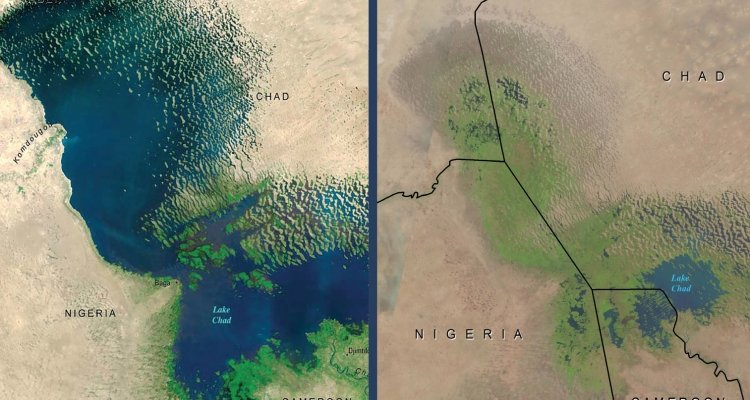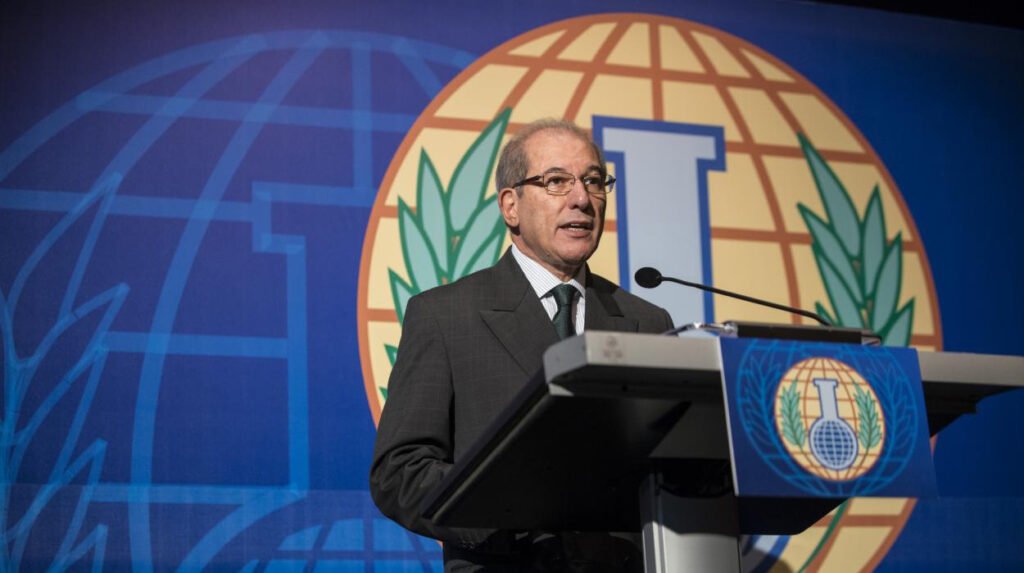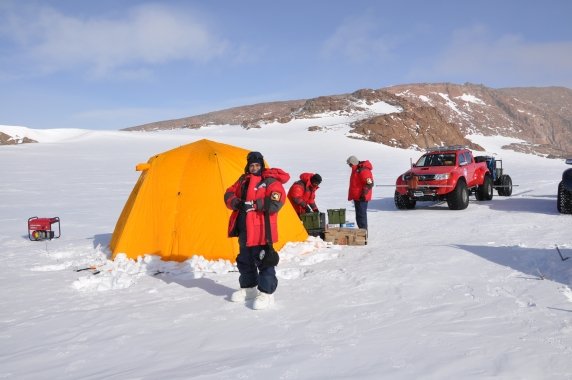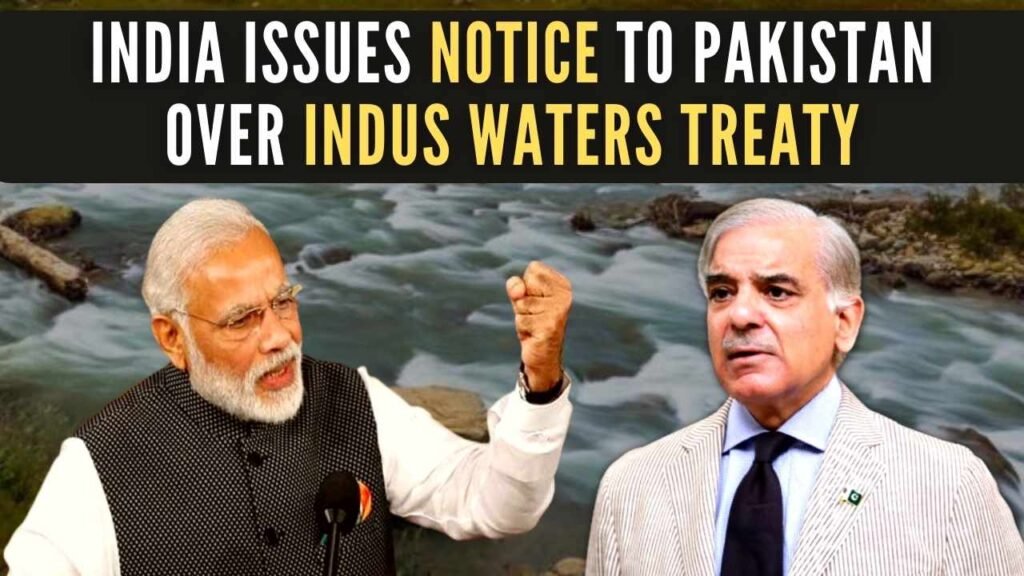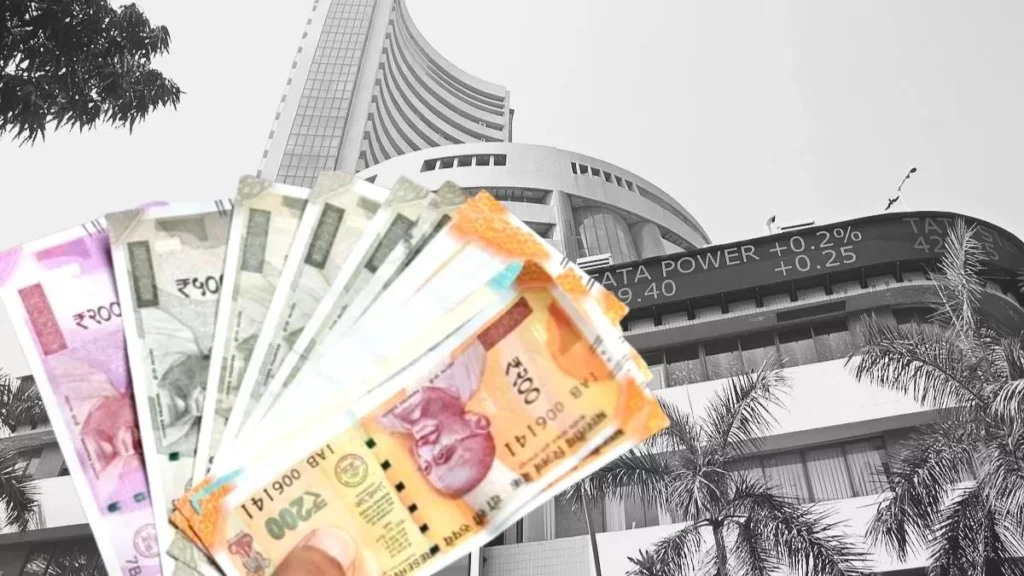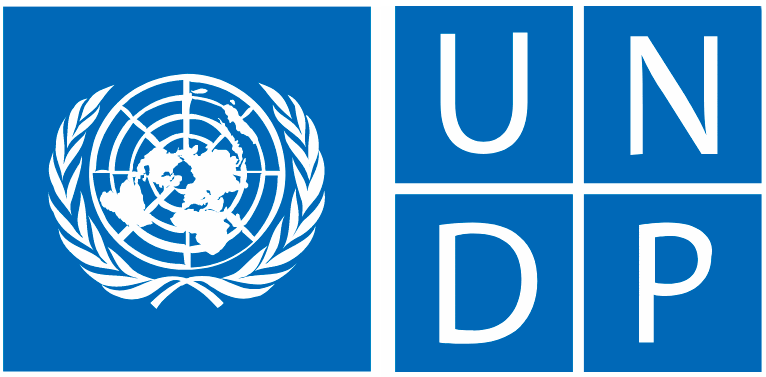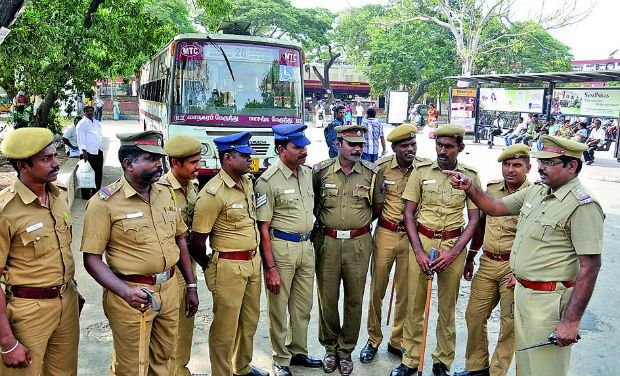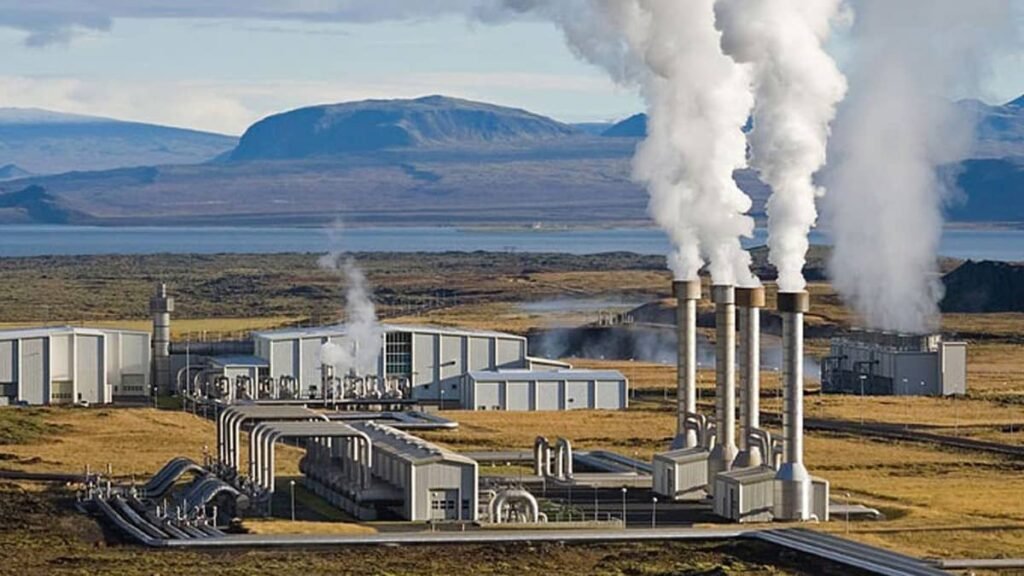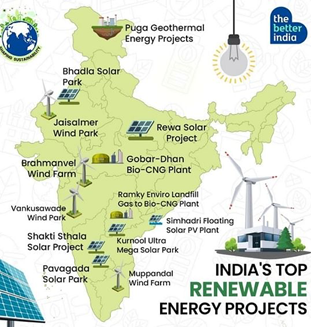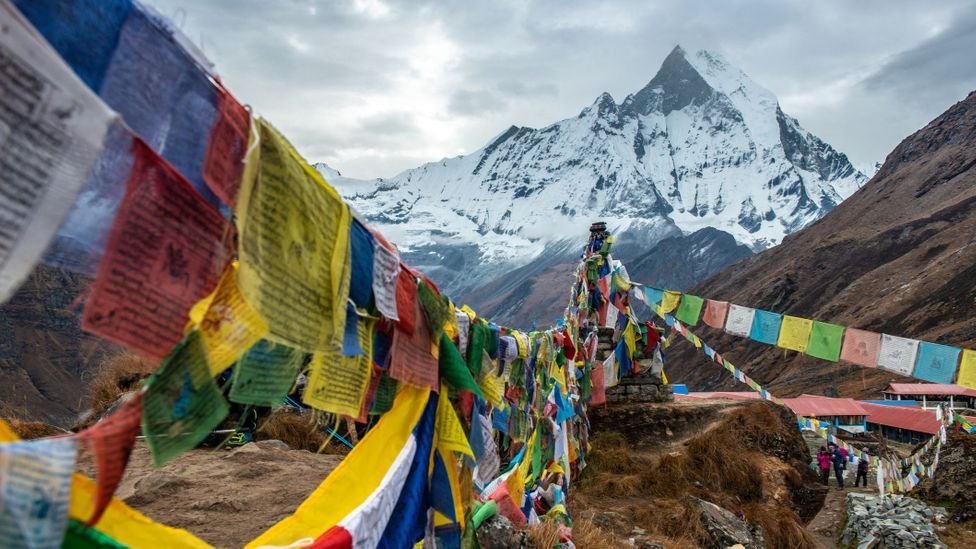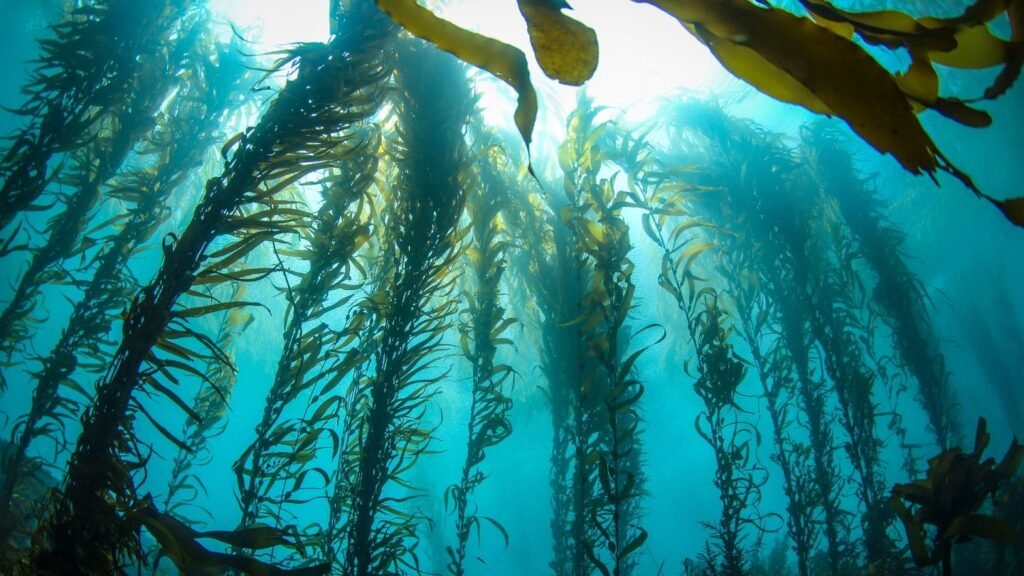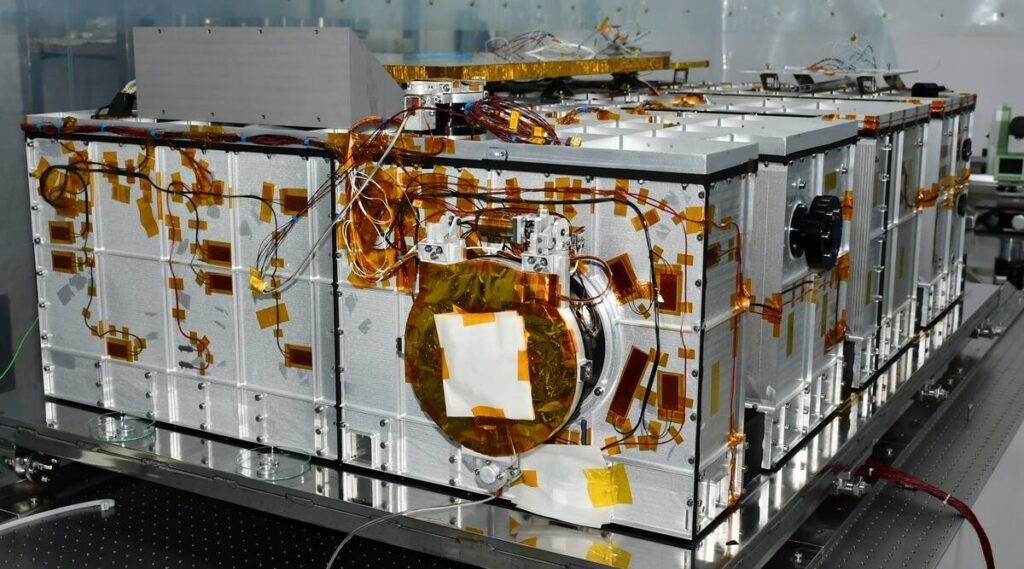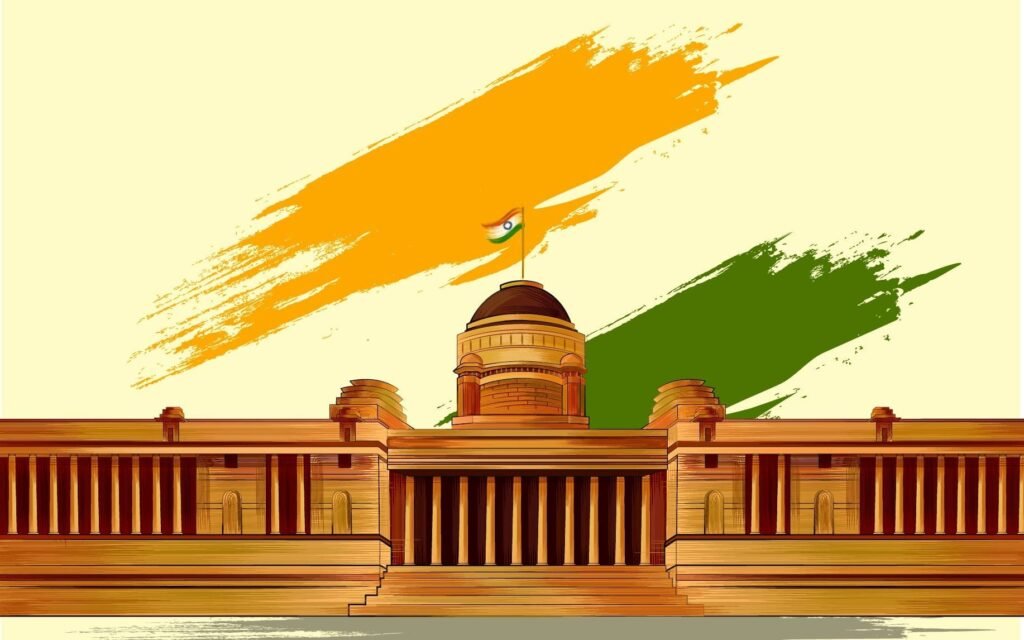
Introduction
- The Constitution of India begins with a Preamble. The Preamble contains the ideals, objectives and basic principles of the Constitution. The salient features of the Constitution have evolved directly and indirectly from these objectives which flow from the Preamble.
- Our Constitution has adopted the best features of most of the major constitutions of the world as per the needs of the country. Though borrowed from almost every constitution in the world, the constitution of India has several salient features that distinguish it from the constitutions of other countries.
Constitution of India – Major Features
The salient features of the Indian Constitution are listed and briefed below:
- Lengthiest Written Constitution
- Constitutions are classified into written, like the American Constitution, or unwritten, like the British Constitution.
- The Constitution of India has the distinction of being the lengthiest and detailed Constitutional document the world has so far produced. In other words, the Constitution of India is the lengthiest of all the written constitutions of the world.
- It is a very comprehensive, elaborate and detailed document.
- The factors that contributed to the elephantine size of the Indian Constitution are:
- Geographical factors, that is, the vastness of the country and its diversity.
- Historical factors, for instance, the influence of the Government of India Act of 1935, which was bulky.
- Single constitution for both the Centre and the states.
- The dominance of legal luminaries in the Constituent Assembly.
- The Constitution of India contains not only the fundamental principles of governance but also detailed administrative provisions.
- Both justiciable and non-justiciable rights are included in the Constitution.
- Drawn from Various Sources
- The Constitution of India has borrowed most of its provisions from the constitutions of various other countries as well as from the Government of India Act of 1935 [About 250 provisions of the 1935 Act have been included in the Constitution].
- Dr B R Ambedkar proudly acclaimed that the Constitution of India has been framed after ‘ransacking all the known Constitutions of the world’.
- The structural part of the Constitution is, to a large extent, derived from the Government of India Act of 1935.
- The philosophical part of the Constitution (Fundamental Rights and the Directive Principles of State Policy) derive their inspiration from the American and Irish Constitutions respectively.
- The political part of the Constitution (the principle of Cabinet government and the relations between the executive and the legislature) have been largely drawn from the British Constitution.
- Blend of Rigidity and Flexibility
- Constitutions are classified into rigid and flexible.
- A rigid constitution is one that requires a special procedure for its amendment, as for example, the American Constitution.
- A flexible constitution is one that can be amended in the same manner as the ordinary laws are made, as for example, the British Constitution.
- The Indian Constitution is a unique example of the combination of rigidity and flexibility.
- A constitution may be called rigid or flexible on the basis of its amending procedure.
- The Indian Constitution provides for three types of amendments ranging from simple to most difficult procedures depending on the nature of the amendment.
- Federal System with Unitary Bias
- The Constitution of India establishes a federal system of government.
- It contains all the usual features of a federation, such as two governments, division of powers, written constitution, the supremacy of the constitution, the rigidity of the Constitution, independent judiciary and bicameralism.
- However, the Indian Constitution also contains a large number of unitary or non-federal features, such as a strong Centre, single Constitution, appointment of state governor by the Centre, all-India services, integrated judiciary, and so on.
- Moreover, the term ‘Federation’ has nowhere been used in the Constitution.
- Article 1, describes India as a ‘Union of States’ which implies two things:
- Indian Federation is not the result of an agreement by the states.
- No state has the right to secede from the federation.
- Hence, the Indian Constitution has been variously described as ‘federal in form but unitary in spirit’, ‘quasi-federal’ by K C Wheare.
- Parliamentary Form of Government
- The Constitution of India has opted for the British Parliamentary System of Government rather than the American Presidential system of government.
- The parliamentary system is based on the principle of cooperation and coordination between the legislative and executive organs while the presidential system is based on the doctrine of separation of powers between the two organs.
- The parliamentary system is also known as the ‘Westminster’ model of government, responsible government and cabinet government.
- The Constitution establishes the parliamentary system not only at the Centre but also in the States.
- In a parliamentary system, the role of the Prime Minister has become so significant, and therefore it is called a ‘Prime Ministerial Government’.
What are the features of parliamentary government in India ?
The features of parliamentary government in India are as follows:
- Presence of real and nominal executives
- Majority party rule
- Collective responsibility of the executive to the legislature
- Membership of the ministers in the legislature
- The leadership of the prime minister or the chief minister
- Dissolution of the lower house (Lok Sabha or Assembly)
- Indian Parliament is not a sovereign body like the British Parliament.
- Parliamentary Government combined with an elected President at the head (Republic).
- Synthesis of Parliamentary Sovereignty and Judicial Supremacy
- The doctrine of the sovereignty of Parliament is associated with the British Parliament while the principle of judicial supremacy with that of the American Supreme Court.
- Just as the Indian parliamentary system differs from the British system, the scope of judicial review power of the Supreme court in India is narrower than that of what exists in the US.
- This is because the American Constitution provides for ‘due process of law’ against that of ‘procedure established by law’ contained in the Indian Constitution (Article 21).
- Therefore, the framers of the Indian Constitution have preferred a proper synthesis between the British principle of parliamentary sovereignty and the American principle of Judicial supremacy.
- The Supreme Court can declare the parliamentary laws as unconstitutional through its power of judicial review.
- The Parliament can amend the major portion of the Constitution through its constituent power.
- Rule of Law
- According to this axiom, people are ruled by law but not by men, that is, the basic truism that no man is infallible. The axiom is vital to a democracy.
- More important is the meaning that law is the sovereign in democracy.
- The chief ingredient of law is custom which is nothing but the habitual practices and beliefs of common people over a long number of years.
- In the final analysis, rule of law means the sovereignty of the common man’s collective wisdom.
- Apart from this crucial meaning, rule of law means a few more things like
- There is no room for arbitrariness
- Each individual enjoys some fundamental rights, and
- The highest judiciary is the final authority in maintaining the sanctity of the law of the land.
- The Constitution of India has incorporated this principle in Part III and in order to provide meaning to Article 14 (all are equal before the law and all enjoy equal protection of laws), promotion of Lok Adalats and the venture of the Supreme court known as “public interest litigation” have been implemented.
- Also, as per today’s law of the land, any litigant can appeal to the presiding judicial authority to argue the case by himself or seek legal assistance with the help of the judiciary.
- Integrated and Independent Judiciary
- India has a single integrated judicial system.
- Also, the Indian Constitution establishes Independent Judiciary by enabling the Indian judiciary to be free from the influence of the executive and the legislature.
- The Supreme Court stands as the apex court of the judicial system. Below the Supreme Court are the High Courts at the state level.
- Under a high court, there is a hierarchy of subordinate courts, that is district courts and the other lower courts.
- The Supreme Court is a federal court, the highest court of appeal, the guarantor of the fundamental rights of the citizens and the guardian of the Constitution. Hence, the Constitution has made various provisions to ensure its independence.
- Fundamental Rights
- Part III of the Indian Constitution guarantees six fundamental rights to all Citizens.
- Fundamental Rights are one of the important features of the Indian Constitution.
- The Constitution contains the basic principle that every individual is entitled to enjoy certain rights as a human being and the enjoyment of such rights does not depend upon the will of any majority or minority.
- No majority has the right to abrogate such rights.
- The fundamental rights are meant for promoting the idea of political democracy.
- They operate as limitations on the tyranny of the executive and arbitrary laws of the legislature.
- They are justiciable in nature, that is, enforceable by the courts for their violation.
- Directive Principles of State Policy
- According to Dr B R Ambedkar, the Directive Principles of State Policy is a ‘novel feature’ of the Indian Constitution.
- They are enumerated in Part IV of the Constitution.
- The Directive Principles were included in our Constitution in order to provide social and economic justice to our people.
- Directive Principles aim at establishing a welfare state in India where there will be no concentration of wealth in the hands of a few.
- They are non-justiciable in nature.
- In the Minerva Mills case (1980), the Supreme Court held that ‘the Indian Constitution is founded on the bedrock of the balance between the Fundamental Rights and the Directive Principles’.
- Fundamental Duties
- The original constitution did not provide for the fundamental duties of the citizens.
- Fundamental Duties were added to our Constitution by the 42nd Amendment Act of 1976 on the recommendation of the Swaran Singh Committee.
- It lays down a list of ten Fundamental Duties for all citizens of India.
- Later, the 86th Constitutional Amendment Act of 2002 added one more fundamental duty.
- While the rights are given as guarantees to the people, the duties are obligations that every citizen is expected to perform.
- However, like the Directive Principles of State Policy, the duties are also non-justiciable in nature.
- There is a total of 11 Fundamental duties altogether.
- Indian Secularism
- The Constitution of India stands for a secular state.
- Hence, it does not uphold any particular religion as the official religion of the Indian State.
- The distinguishing features of a secular democracy contemplated by the Constitution of India are:
- The State will not identify itself with or be controlled by any religion;
- While the State guarantees to everyone the right to profess whatever religion one chooses to follow (which includes also the right to be an antagonist or an atheist), it will not accord preferential treatment to any of them;
- No discrimination will be shown by the State against any person on account of his religion or faith; and
- The right of every citizen, subject to any general condition, to enter any office under the state will be equal to that of the fellow citizens. Political equality which entitles any Indian citizen to seek the highest office under the State is the heart and soul of secularism as envisaged by Constitution.
- The conception aims to establish a secular state. This does not mean that the State in India is anti-religious.
- The western concept of secularism connotes a complete separation between religion and the state (negative concept of secularism).
- But, the Indian constitution embodies the positive concept of secularism, i.e., giving equal respect to all religions or protecting all religions equally.
- Moreover, the Constitution has also abolished the old system of communal representation. However, it provides for the temporary reservation of seats for the scheduled castes and scheduled tribes to ensure adequate representation to them.
- Universal Adult Franchise
- Indian democracy functions on the basis of ‘one person one vote’.
- Every citizen of India who is 18 years of age or above is entitled to vote in the elections irrespective of caste, sex, race, religion or status.
- The Indian Constitution establishes political equality in India through the method of universal adult franchise.
- Single Citizenship
- In a federal state usually, the citizens enjoy double citizenship as is the case in the USA.
- In India, there is only single citizenship.
- It means that every Indian is a citizen of India, irrespective of the place of his/her residence or place of birth.
- He/she is not a citizen of the Constituent State like Jharkhand, Uttaranchal or Chattisgarh to which he/she may belong but remains a citizen of India.
- All the citizens of India can secure employment anywhere in the country and enjoy all the rights equally in all the parts of India.
- The Constitution makers deliberately opted for single citizenship to eliminate regionalism and other disintegrating tendencies.
- Single citizenship has undoubtedly forged a sense of unity among the people of India.
- Independent Bodies
- The Indian constitution not only provides for the legislative, executive and judicial organs of the government (Central and state) but also establishes certain independent bodies.
- They are envisaged by the Constitution as the bulwarks of the democratic system of Government in India.
- Emergency Provisions
- The Constitution makers also foresaw that there could be situations when the government could not be run as in ordinary times.
- To cope with such situations, the Constitution elaborates on emergency provisions.
- There are three types of emergency
- Emergency caused by war, external aggression or armed rebellion [Aricle 352]
- Emergency arising out of the failure of constitutional machinery in states [Article 356 & 365]
- Financial emergency [Article 360].
- The rationality behind the incorporation of these provisions is to safeguard the sovereignty, unity, integrity and security of the country, the democratic political system and the Constitution.
- During an emergency, the central government becomes all-powerful and the states go into total control of the centre.
- This kind of transformation of the political system from federal (during normal times) to unitary (during emergency) is a unique feature of the Indian Constitution.
- Three-tier Government
- Originally, the Indian Constitution provided for a dual polity and contained provisions with regard to the organisation and powers of the Centre and the States.
- Later, the 73rd and 74th Constitutional Amendment Acts (1992) have added a third-tier of government (that is, Local Government), which is not found in any other Constitution of the world.
- The 73rd Amendment Act of 1992 gave constitutional recognition to the panchayats (rural local governments) by adding a new Part IX and a new schedule 11 to the Constitution.
- Similarly, the 74th Amendment Act of 1992 gave constitutional recognition to the municipalities (urban local government) by adding a new Part IX-A and a new schedule 12 to the Constitution.
- Co-operative Societies
- The 97th Constitutional Amendment Act of 2011 gave a constitutional status and protection of cooperative societies.
- In this context, it made the following three changes in the Constitution:
- It made the right to form cooperative societies a fundamental right (Article 19).
- It included a new Directive Principles of State Policy on the promotion of cooperative societies (Article 43-B).
- It added a new Part IX-B in the Constitution which is entitled “The Co-operative Societies” [Articles 243-ZH to 243-ZT].
- The new Part IX-B contains various provisions to ensure that the cooperative societies in the country function in a democratic, professional, autonomous and economically sound manner.
- It empowers the Parliament in respect of multi-state cooperative societies and the state legislatures in respect of other cooperative societies to make the appropriate law.
Philosophy of Constitution
- On January 22, 1947, the Constituent Assembly adopted the Objectives Resolution drafted by Jawaharlal Nehru. The Objectives Resolution contained the fundamental propositions of the Constitution and set forth the political ideas that should guide its deliberations.
The main principles of the resolution were:
- that India is to be an independent, sovereign republic ;
- that it is to be a democratic union with an equal level of self-government in all the constituent parts;
- that all power and the authority of the Union Government and governments of the constituent parts are derived from the people;
- that the constitution must strive to obtain and guarantee to the people justice-based upon social, economic and political equality, of opportunity and equality before the law;
- that there should be freedom of thought, expression, belief, faith, worship, vocation, association and action;
- that the constitution must provide just rights for minorities, and people from backward and tribal areas, etc. so that they can be equal participants of social, economic and political justice; and
- to frame a constitution that should secure for India, a due place in the community of nations.
The philosophy of a Constitution consists of the ideals for which the constitution stands and the policies that the Constitution enjoins upon the rulers of the Community to follow. The Constitution of India reflects the impact of our ideology in the following spheres:
(i) Secularism: Secularism is the hallmark of the Indian Constitution. People professing different religions have the freedom of religious worship of their own choice. All religions have been treated alike. The fact appreciated in India was that all religions love humanity and uphold the truth. All the social reformers and political leaders of modern Indian have advocated religious tolerance, religious freedom and equal respect for all religions. This very principle has been adopted in the Constitution of India where all religions enjoy equal respect. However, the word ‘secularism’ was nowhere mentioned in the Constitution as adopted in 1949. The word ‘secularism’ has now been added to the Preamble to the Constitution through the 42nd Amendment passed in 1976.
(ii) Democracy: We have borrowed the modern form of democracy from the West. Under this system, democracy means the periodic responsibilities of the Government to go to the people. For this purpose; elections have been held every five-year to elect a Government by the people. However, democracy covers even the economic and social aspects of life. This aspect of democracy is well-reflected in the Directive Principles of State Policy. They are aimed at human welfare, co-operation, international brotherhood and so on.
(iii) Sarvodaya: Sarvodaya refers to the welfare of all. It is different from the welfare of the majority. It seeks to achieve the welfare of all without exception. It is referred to as Ram Rajya. The concept of Sarvodaya was developed by Mahatma Gandhi Acharya Vinoba Bhave and J. Narayan under which the material, spiritual, moral and mental development of everyone is sought to be achieved. The Preamble to the Indian Constitution and the Directive Principles of State Policy represent this ideal.
(iv) Socialism: Socialism is not new to India. Vedanta’s philosophy has socialism in it. The national struggle for freedom had this aim also in view. Jawaharlal Nehru referred to himself as a socialist and republican. Almost all the parties in India profess to promote democratic socialism. These principles are included in the Directive Principles of State Policy. However, to lay emphasis on this aspect, the word ‘socialism’ was specifically added to the Preamble to the Constitution through the 42nd Amendment.
(v) Humanism: Humanism is a salient feature of Indian ideology. Indian ideology regards the whole of humanity as one big family. It believes in resolving international disputes through mutual negotiations. This is what we find in the Directive Principles of State Policy.
(vi) Decentralization: Decentralization is another aspect of Sarvodaya. Indian has always practised decentralization through the Panchayat system. Mahatma Gandhi also advocated decentralization. It is on this account that he is regarded as a philosophical anarchist. We have introduced the Panchayati Raj system in India to achieve the objective of decentralisation. The concept of cottage industries as laid down in the Directive Principles of State Policy also refers to decentralization.
(vii) Liberalism: Liberalism does not refer to the Western concept of liberalism. It refers, in the Indian context, to self-government, secularism, nationalism, economic reforms, constitutional approach, representative institutions etc. all these concepts were advocated by the modern Indian leaders.
(viii) Mixed Economy: Co-existence is a salient feature of our ideology. Co-existence has manifested itself through a mixed system of economy. In this system, we have allowed both the private and public sectors of the economy to work simultaneously. Large scale and essential industries have been put in the public sector.
(ix) Gandhism: Gandhism represents an ethical and moral India. Gandhi set a new example of fighting foreign rule through non-violence. He taught the importance of non-violence and truth. He advocated untouchability, cottage industry, prohibition, adult education and the uplift of villages. He wanted a society free of exploitation and decentralized in character. All these Gandhian principles have found an honourable place in the Constitution of India.
Criticism of the Constitution :
The Constitution of India, as framed and adopted by the Constituent Assembly of India, has been criticized on the following grounds:
- A Borrowed Constitution
- The critics opined that the Indian Constitution contains nothing new and original. They described it as a ‘borrowed Constitution’ or a ‘bag of borrowings’ or a ‘hotch-potch Constitution’ or a ‘patchwork’ of several documents of the world constitutions. However, this criticism is unfair and illogical. This is because, the framers of the Constitution made necessary modifications in the features borrowed from other constitutions for their suitability to the Indian conditions, at the same time avoiding their faults.
- While answering the above criticism in the Constituent Assembly, Dr. B.R. Ambedkar, the Chairman of the Drafting Committee, said : “One likes to ask whether there can be anything new in a Constitution framed at this hour in the history of the world. More than hundred years have rolled over when the first written Constitution was drafted. It has been followed by many countries reducing their constitutions to writing. What the scope of a Constitution should be has long been settled. Similarly, what are the fundamentals of a Constitution are recognized all over the world. Given these facts, all Constitutions in their main provisions must look similar. The only new things, if there can be any, in a Constitution framed so late in the day are the variations made to remove the faults and to accommodate it to the needs of the country. The charge of producing a blind copy of the Constitutions of other countries is based, I am sure, on an inadequate study of the Constitution”
- A Carbon Copy of the 1935 Act
- The critics said that the framers of the Constitution have included a large number of the provisions of the Government of India Act of 1935 into the Constitution of India. Hence, they called the
- Constitution as a “Carbon Copy of the 1935 Act” or an “Amended Version of the 1935 Act”. For example, N. Srinivasan observed that the Indian Constitution is “both in language and substance a close copy of the Act of 1935”. Similarly, Sir Ivor Jennings, a British Constitutionalist, said that “the Constitution derives directly from the Government of India Act of 1935 from which, in fact, many of its provisions are copied almost textually”. Further, P.R. Deshmukh, a member of the Constituent Assembly, commented that “the Constitution is essentially the Government of India Act of 1935 with only adult franchise added”. The same Dr. B.R. Ambedkar answered the above criticism in the Constituent Assembly in the following way : “As to the accusation that the Draft Constitution has reproduced a good part of the provisions of the Government of India Act, 1935, I make no apologies. There is nothing to be ashamed of in borrowing. It involves no plagiarism. Nobody holds any patent rights in the fundamental ideas of a Constitution. What I am sorry about is that the provisions taken from the Government of India Act, 1935, relate mostly to the details of administration”.
- Un-Indian or Anti-Indian
- According to the critics, the Indian Constitution is ‘un-Indian’ or ‘anti-Indian’ because it does not reflect the political traditions and the spirit of India. They said that the foreign nature of the Constitution makes it unsuitable to the Indian situation or unworkable in India. In this context, K. Hanumanthaiya, a member of the Constituent Assembly, commented : “We wanted the music of Veena or Sitar, but here we have the music of an English band. That was because our Constitution-makers were educated that way”. Similarly, Lokanath Misra, another member of the Constituent Assembly, criticized the Constitution as a “slavish imitation of the west, much more – a slavish surrender to the west”. Further, Lakshminarayan Sahu, also a member of the Constituent Assembly, observed: “The ideals on which this draft Constitution is framed have no manifest relation to the fundamental spirit of India. This Constitution would not prove suitable and would break down soon after being brought into operation”
- An Un-Gandhian Constitution
- According to the critics, the Indian Constitution is un-Gandhian because it does not contain the philosophy and ideals of Mahatma Gandhi, the father of the Indian Nation. They opined that the Constitution should have been raised and built upon village panchayats and district panchayats. In this context, the same member of the Constituent Assembly, K. Hanumanthaiya, said: “That is exactly the kind of Constitution Mahatma Gandhi did not want and did not envisage”. T. Prakasam, another member of the Constituent Assembly, attributed this lapse to Ambedkar’s non-participation in the Gandhian movement and the antagonism towards the Gandhian ideas.
- Elephantine Size
- The critics stated that the Indian Constitution is too bulky and too detailed and contains some unnecessary elements. Sir Ivor Jennings, a British Constitutionalist, observed that the provisions borrowed were not always well-selected and that the constitution, generally speaking, was too long and complicated.
- In this context, H.V. Kamath, a member of the Constituent Assembly, commented : “The emblem and the crest that we have selected for our assembly is an elephant. It is perhaps in consonance with that our constitution too is the bulkiest that the world has produced”. He also said: “I am sure, the House does not agree that we should make the Constitution an elephantine one”
- Paradise of the Lawyers
- According to the critics, the Indian Constitution is too legalistic and very complicated. They opined that the legal language and phraseology adopted in the constitution makes it a complex document. The same Sir Ivor Jennings called it a “lawyer’s paradise”.
- In this context, H.K. Maheswari, a member of the Constituent Assembly, observed : “The draft tends to make people more litigious, more inclined to go to law courts, less truthful and less likely to follow the methods of truth and non-violence. If I may say so, the draft is really a lawyer’s paradise. It opens up vast avenues of litigation and will give our able and ingenious lawyers plenty of work to do”
- Similarly, P.R. Deshmukh, another member of the Constituent Assembly, said : “I should, however, like to say that the draft of the articles that have been brought before the House by Dr. Ambedkar seems to my mind to be far too ponderous like the ponderous tomes of a law manual. A document dealing with a constitution hardly uses so much of padding and so much of verbiage. Perhaps it is difficult for them to compose a document
- which should be, to my mind, not a law manual but a socio- political document, a vibrating, pulsating and life-giving document. But, to our misfortune, that was not to be, and we have been burdened with so much of words, words and words which could have been very easily eliminated.
The Constitution of India at a Glance
|
Parts of the Indian Constitution
|
Subject Mentioned in the Part
|
Articles in Indian Constitution
|
| Part I |
Union & Its Territory |
Article 1-4 |
| Part II |
Citizenship |
Article 5-11 |
| Part III |
Fundamental Rights |
Article 12-35 |
| Part IV |
Directive Principles |
Article 36-51 |
| Part IV A |
Fundamental Duties |
Article 51A |
| Part V |
The Union |
Article 52-151 |
| Part VI |
The States |
Article 152-237 |
| Part VII |
Note: 7th Amendment Act, 1956 repealed Part 7 |
– |
| Part VIII |
The Union Territories |
Article 239-242 |
| Part IX |
The Panchayats |
Article 243-243O |
| Part IX A |
The Municipalities |
Article 243P-243ZG |
| Part IX B |
Co-operative Societies |
Article 243ZH-243ZT |
| Part X |
Scheduled and Tribal Areas |
Article 244-244A |
| Part XI |
Relation between Union & States |
Article 245-263 |
| Part XII |
Finance, Property, Contracts and Suits |
Article 264-300A |
| Part XIII |
Trade, Commerce and Intercourse within the territory of India |
Article 301-307 |
| Part XIV |
Services under the Union and States |
Article 308-323 |
| Part XIV A |
Tribunals |
Article 323A-323B |
| Part XV |
Elections |
Article 324-329A |
| Part XVI |
Special Provisions relating to certain classes |
Article 330-342 |
| Part XVII |
Official Languages |
Article 343-351 |
| Part XVIII |
Emergency Provisions |
Article 352-360 |
| Part XIX |
Miscellaneous |
Article 361-367 |
| Part XX |
Amendment of the Constitution |
Article 368 |
| Part XXI |
Temporary, Transitional and Special Provisions |
Article 369-392 |
| Part XXII |
Short title, Commencement, Authoritative Text in
Hindi and Repeals |
Article 393-395 |

